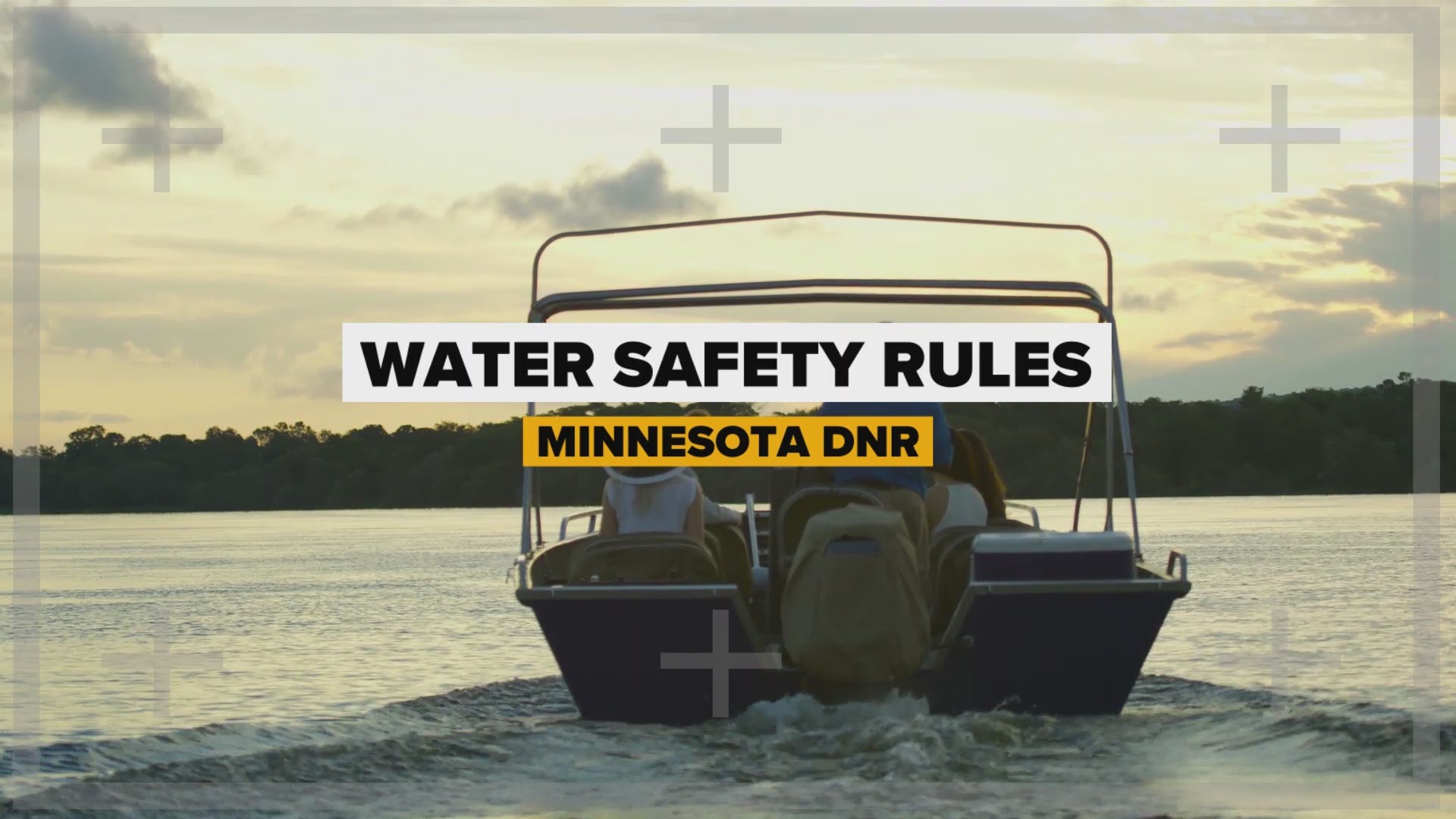ST PAUL, Minn. — Although it's spring by calendar standards, parts of Minnesota's landscape are hanging on desperately to the remnants of winter. With temps remaining cooler than normal, many lakes in the northern part of the state remain iced in.
The moment ice does go out, boats, canoes and kayaks will go in, and the Minnesota Department of Natural Resources (DNR) says the "cold water" period is the most dangerous for those who boat and paddle.
Each year, about 30% of fatal boat accidents happen during the cold-water period. DNR water safety experts say in many of those incidents, the victims weren’t wearing a life jacket. It sounds obvious, but the DNR reminds all boaters that wearing a life jacket – not just having one somewhere on the boat – is the most effective way to survive a fall into cold water.
“For many of us, our most cherished memories revolve around time spent on the water,” said Lt. Adam Block, boating law administrator for the DNR Enforcement Division. “But the water can be cruel and unforgiving, and failing to take the proper precautions before heading onto it can have disastrous consequences.”
Cold water immersion can kill in several ways, and most people die long before they become hypothermic. Those in the water for up to 30 minutes experience rapid cooling of arms and legs, which impairs the ability to keep one's head above water. A person's swimming ability makes little difference when these impacts occur.
Staying with the boat increases chances of survival, as does using the Heat Escape Lessening Position, a way to remain afloat while conserving body heat.
Here is a DNR list of things you should consider before taking that first trip on the water:
- Ensure your boat is registered and equipped with proper safety equipment, and that all pieces are functioning properly.
- Wear a life jacket (a foam life jacket is more effective than an inflatable life jacket during the cold-water season).
- Distribute weight evenly and abide by manufacturer’s weight limits to reduce the likelihood of falling overboard.
- Have a means of communication (cell phone, radio, walkie talkie). Boaters also should let other people know where they’re going and when they plan to return.
- Watch the weather to avoid shifting winds or storms.
For those taking advantage of lakes that are still iced in for fishing and other activities, the DNR offers these reminders.
- Wear a life jacket and carry readily accessible ice picks.
- Check the ice thickness frequently.
- Double the DNR’s ice thickness recommendations, which apply to new, clear ice. Spring ice is weaker and compromised due to warming temps.
For more on cold water dangers, visit the DNR website.
Watch KARE in the Air:
Check out amazing drone video of Minnesota's most beautiful and iconic spots in our YouTube playlist:

